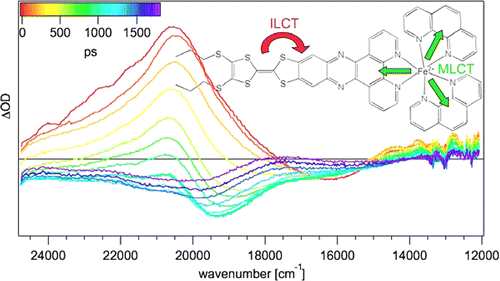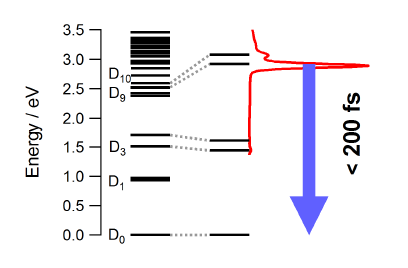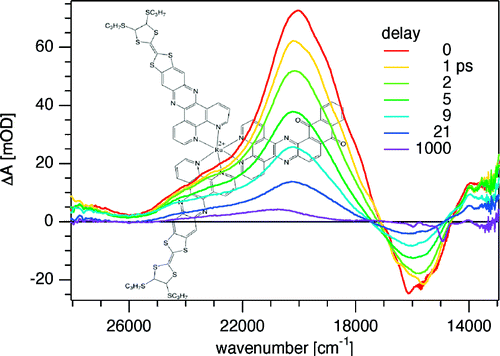-
A Donor–Acceptor Tetrathiafulvalene Ligand Complexed to Iron(II): Synthesis, Electrochemistry, and Spectroscopy of [Fe(phen)2(TTF-dppz)](PF6)2
N. Dupont, Y.-F. Ran, S.-X. Liu, J. Grilj, E. Vauthey, S. Decurtins and A. Hauser
Inorganic Chemistry, 52 (1) (2013), p306-312


DOI:10.1021/ic3019277 | unige:25113 | Abstract | Article HTML | Article PDF

The synthesis and photophysical properties of the complex [Fe(phen)2(TTF-dppz)]2+¬†(TTF-dppz = 4‚Ä≤,5‚Ä≤-bis-(propylthio)tetrathiafulvenyl[i]dipyrido[3,2-a:2‚Ä≤,3‚Ä≤-c]phenazine, phen = 1,10-phenanthroline) are described. In this complex, excitation into the metal‚Äďligand charge transfer bands results in the population of a high-spin state of iron(II), with a decay lifetime of approximately 1.5 ns, in dichloromethane, at room temperature. An intraligand charge transfer state can also be obtained and has a lifetime of 38 ps. A mechanism for the different states reached is proposed based on transient absorption spectroscopy.



